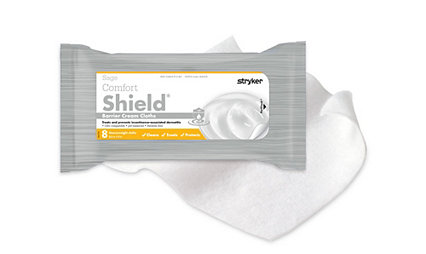Enhance urinary incontinence care
This male urine management system uses continuous suction to help promote early catheter removal, addressing the #1 risk factor of catheter-associated urinary tract infections (CAUTI).1 PrimoFit+ serves as an alternative to external collection devices or, when appropriate, indwelling catheters. It’s designed to address the factors required to effectively manage male urinary incontinence – fit, securement and performance.
- Base adhesive provides a customizable fit and eliminates the need to use sizing charts
- Adhesive pad and base adhesive keep device in place and allow for easy application and removal
- Ultra-soft fabric diverts urine away from skin
- Can be left in place for up to 24 hours
- Reorder #5405
$340-450M
U.S. healthcare costs from CAUTIs2
Help address the risk of CAUTI with PrimoFit+
Your bed-bound patients deserve the best possible care when it comes to urine management.
Approximately 75% of hospital-acquired urinary tract infections are associated with an indwelling urinary catheter.1
Each day the indwelling urinary catheter remains, a patient has a 3 – 7% increased risk of acquiring a CAUTI.3
It is estimated that 10 – 25% of acute care hospitalized patients and 7.5 – 10% of patients in long-term care facilities are catheterized at any one time.4
FAQs
Replace PrimoFit+ at least every 24 hours, or sooner if soiled with stool or bodily fluids other than urine. Dispose of the device per hospital protocol and local regulations.
Replace tubing and empty and/or replace suction canister per hospital protocol.
PrimoFit+ is designed to divert urine away from a patient into a suction canister using low continuous suction. It is not designed to be connected to a gravity-dependent drainage bag.
Set vacuum to low, continuous suction at a minimum of 60 mmHg. Always use the minimum amount of suction necessary.
PrimoFit+ may be complementary to an early mobility program. PrimoFit+ is designed to serve as a transition between an immobile patient who requires an indwelling urinary catheter to a mobile patient who is able to ambulate to the commode or bathroom. The devices should be assessed by medical and nursing staff and discontinued when independent or assisted toileting is feasible and during patient ambulation.
Interested in learning more? Connect with an expert.
References:
1. Centers for Disease Control and Prevention, Catheter-associated Urinary Tract Infections (CAUTI). Available at: https://www.cdc.gov/hai/ca_uti/uti.html.
2. Agency for Healthcare Research and Quality (AHRQ), Toolkit for Reducing Catheter-Associated Urinary Tract Infections in Hospital Units: Implementation Guide, Rockville, MD, October 2015.
3. Centers for Disease Control (CDC) National Healthcare Safety Network, Urinary Tract Infection (Catheter-Associated Urinary Tract Infection (CAUTI) and Non-Catheter-Associated Urinary Tract Infection (UTI) Events. January 2021.
4. APIC Guide to the Elimination of Catheter-Associated Urinary Tract Infections (CAUTIs) 2008.
SAGE-UM-SYK-697597_REV-2_en_us











